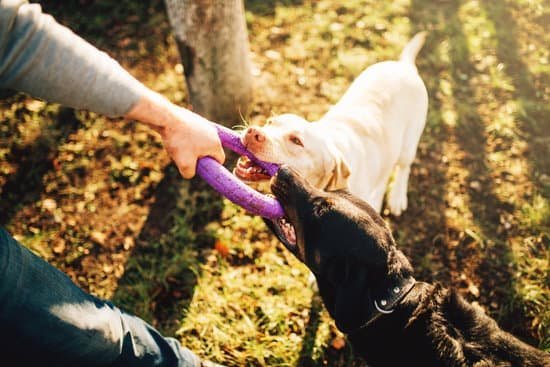It can be a challenge to leash train an older dog, but with patience and perseverance it can be done. The key is to start slowly and gradually increase the amount of time the dog is on the leash.
Begin by putting the leash on your dog and letting him wander around the house. When he starts to pull on the leash, say “no” and gently tug him back to you. Reward him with a treat when he walks calmly by your side.
If your dog is resistant to walking on the leash, start by putting him in a sit or a down position and then give him a treat. Once he is comfortable with this, start to slowly walk him around the house.
When you are ready to take your dog outside, begin by walking him around the yard. Once he is comfortable with this, start to take him for short walks around the neighborhood. gradually increase the length of the walks as your dog becomes more comfortable with the leash.
It is important to be consistent with your training and to never allow your dog to pull on the leash. If he does start to pull, say “no” and gently tug him back to you. Be patient and keep rewarding him with treats when he behaves well. With time and patience, your older dog will be leash trained and will be able to enjoy walks with you and your family.
Pee Pad Training Older Dogs
As your dog ages, you may find that he or she has a harder time holding it when outside. This can be frustrating for both you and your pet, as you may have to take them out more often and they may be less inclined to obey commands to go potty. One way to help ease this transition is to train your dog to use pee pads.
Pee pads are essentially a designated spot for your dog to go to the bathroom indoors. They are absorbent and can be placed in a variety of locations, such as near your dog’s bed or in a designated corner of the house. Start by putting the pee pad in a location where your dog is likely to go and placing some of their urine on it. When your dog goes to the bathroom on the pad, praise them and give them a treat. As they become more comfortable with the pad, you can start to move it to different locations in the house.
It is important to remember that pee pads should not be used as a replacement for taking your dog outside. They should only be used as a last resort or when your pet is unable to go outside for some reason.
How House Train Older Dog
Many people are under the assumption that house training a dog is an easy task. This could not be further from the truth. House training an older dog can be a difficult process, but it is not impossible. If you are willing to put in the time and effort, your older dog can be successfully house trained.
The first step in house training an older dog is to create a routine. You need to be consistent with your commands and rewards. If you are inconsistent, your dog will not know what is expected of him.
The next step is to set up a designated bathroom area. This should be an area where your dog is comfortable and has easy access to. Make sure to keep this area clean and free of distractions.
When you first begin house training your older dog, you will need to take him outside frequently. Once your dog has had a chance to relieve himself, give him a reward such as a treat or a pat on the head. As your dog becomes more consistent with going outside, you can start to lengthen the amount of time between bathroom breaks.
If you find that your dog is having accidents inside the house, do not punish him. This will only make him more anxious and less likely to relieve himself in the correct area. Instead, clean up the mess and put your dog back on his bathroom routine.
House training an older dog can be a difficult process, but it is not impossible. With patience and perseverance, you can have a house-trained dog in no time.
Training An Older Dog To Hunt
One of the most rewarding things about owning a dog is being able to share your favorite hobby with them. Hunting is a great pastime that can be enjoyed by people of all ages, and it’s just as much fun for dogs as it is for humans. If you’re interested in teaching your older dog how to hunt, there are a few things you need to know.
The first step is to make sure your dog is physically capable of hunting. Dogs that are older or out of shape may not be able to keep up with you during a hunt. Start by taking your dog for a long walk or run to get them into shape.
Once your dog is physically ready, it’s time to start training them how to hunt. The best way to do this is to start with basic obedience commands and work your way up to more advanced commands. Once your dog knows how to obey basic commands, you can start teaching them how to hunt.
The best way to teach a dog how to hunt is to start with small game such as rabbits or squirrels. begin by taking your dog to a location where you know there are rabbits or squirrels. Once your dog is in the area, start giving them commands to hunt. The most important command is “find.” This command tells your dog to find the prey and attack.
Once your dog has learned how to hunt small game, you can start working on teaching them how to hunt larger game such as deer. The process is the same as teaching them how to hunt small game, but you will need to increase the distance between you and your dog.
Teaching an older dog how to hunt can be a rewarding experience for both you and your pet. By following the tips above, you can help your dog become a successful hunter.
Can You Bell Train An Older Dog
?
There is a lot of debate surrounding the topic of whether or not you can bell train an older dog. Some trainers believe that it is impossible to teach an older dog this behavior, while others claim that it is very possible with a bit of patience and perseverance. The truth is that it is possible to bell train an older dog, but it may take a bit more time and effort than it would take to train a younger dog.
One of the main reasons why it can be more difficult to bell train an older dog is because they may already have developed some bad habits. An older dog may be resistant to change and may be less inclined to listen to your commands. In addition, an older dog may not have as much energy as a younger dog, making it more difficult to train them.
If you are determined to bell train your older dog, you will need to be patient and persistent. You may need to spend more time training your dog and may need to use more treats and positive reinforcement. You may also need to be more patient when it comes to correcting bad behavior.
It is important to keep in mind that not all older dogs are resistant to change and that some may be just as easy to train as younger dogs. If you are having trouble training your older dog, it may be a good idea to consult a professional dog trainer.

Welcome to the blog! I am a professional dog trainer and have been working with dogs for many years. In this blog, I will be discussing various topics related to dog training, including tips, tricks, and advice. I hope you find this information helpful and informative. Thanks for reading!





